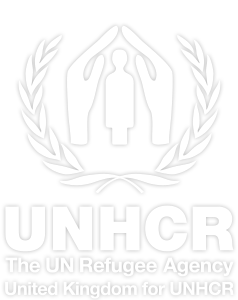Refugee facts
We help safeguard the rights and well-being of anyone who has been forced to flee. Learn more about the people we help protect.
Photo: © UNHCR/Sahat Zia Hero
In an often polarised world where xenophobia and misunderstandings can take hold all too easily, words and definitions really matter.
As the custodian of the Refugee Convention, UNHCR is responsible for protecting the human rights of all people forced to flee conflict and persecution. Stay informed, know the facts and help us fight misinformation to ensure these rights are protected.
Key facts
What makes someone a refugee?
Refugees are people fleeing conflict or persecution. They are defined and protected in international law, and must not be expelled or returned to situations where their life and freedom are at risk.
At the end of 2023, there were 43.4 million refugees around the world, with slightly more than 6.4 million of them being Afghan refugees. As the Russian Federation’s war on Ukraine continued, the number of refugees from Ukraine stood at 6 million at the end of the year.
UNHCR works tirelessly to reach and protect these families – making sure they avoid being returned to danger, access fair and efficient asylum procedures, and have their basic human rights respected while they secure a longer term solution.
Who is an asylum-seeker?
An asylum-seeker is someone who has fled persecution and found their way to another country, but their request for sanctuary there has yet to be processed.
Every year, around one million people seek asylum and each country has its own system for determining who qualifies for international protection. But during mass movements of refugees, when thousands of families are crossing borders to escape conflict or violence, it’s not always possible or necessary to conduct individual interviews with every one of them. These people are often called ‘prima facie’ refugees.
Whatever the circumstances, we believe everyone has a right to seek asylum from persecution – and we do everything we can to protect those in need.
Who is an internally displaced person?
Internally displaced people (IDPs) have fled their homes, but not crossed a border to find safety. Unlike refugees, they are on the run in their own countries and remain under the protection of their own government – even if that government is the reason for their displacement.
At the last estimate, some 63.3 million people were internally displaced due to armed conflict, generalised violence or human rights violations.
These families often move to remote, inhospitable areas where it’s difficult to deliver aid, but nothing deters UNHCR from trying to reach them and provide the assistance they need to survive.
What are the latest global trends?
By the end of 2023, there were an estimated 117.3 million people displaced globally by conflict and persecution. Most stay either inside their country or nearby in neighbouring countries.
Most refugees (75%) are hosted by low and middle income countries, and 158,700 resettlement arrivals were reported globally in 2023.
You can learn more in UNHCR’s annual Global Trends Report, which is published every June with complete data for the previous calendar year. Visit our publications page for latest editions.
Visit UNHCR’s data portal for the latest data on individual humanitarian crises.
Which countries host the most refugees?
By the end of 2023, the Islamic Republic of Iran hosted the largest refugee population, with 3.8 million people.
Türkiye (3.3 million), Colombia (2.9 million), Germany (2.6 million) and Pakistan (2 million) were next. . Almost all refugees hosted in the Islamic Republic of Iran and Pakistan are Afghans and similarly nearly all refugees in Türkiye are Syrians.
As the war in Ukraine ground on, approximately 714,900 new displacements were reported during the year, and 3.7 million people were estimated to still be displaced by the end of the year
Full data for 2023 is published by UNHCR in its annual Global Trends Report, released in June 2024.
What does it mean to be stateless?
Stateless people do not have a nationality and can struggle to claim their basic human rights, such as education, healthcare, employment and freedom of movement. Many face a lifetime of obstacles – often not allowed to go to school, see a doctor, get a job, open a bank account, buy a house or even get married.
UNHCR is determined to end statelessness by 2024 and is working with other international organisations, NGOs and UN agencies to make that happen.
Who is a returnee?
Returnees are people who can finally return home to their native country after an often traumatic time in exile. It may happen months, years or even decades after they left – and sometimes it may not happen at all.
UNHCR works with States and other partners to promote, facilitate, and coordinate voluntary repatriation in safety and dignity. This includes helping people to develop skills, resources and assets that will be vital on their return, as well as assisting with transportation and the readjustment process.
What is the 1951 Refugee Convention?
This convention and its 1967 Protocol are the key legal documents that form the basis of our work. Ratified by 145 State parties, it defines the term ‘refugee’ and outlines the rights of the displaced, as well as the legal obligations of States to protect them.
According to the Convention, a refugee is legally defined as: ‘a person who is outside his or her country of nationality or habitual residence; has a well-founded fear of being persecuted because of his or her race, religion, nationality, membership of a particular social group or political opinion; and is unable or unwilling to avail him— or herself of the protection of that country, or to return there, for fear of persecution.’
The core principle of the convention is non-refoulement, which asserts that a refugee should not be returned to a country where they face serious threats to their life or freedom. This is now considered a rule of customary international law.
UNHCR’s role is to serve as ‘guardian’ of the 1951 Convention and its 1967 Protocol. According to the legislation, States are expected to cooperate with us in ensuring that the rights of refugees are respected and protected.
How can I help refugees?
There are many ways you can help refugees, whether volunteering in your community, hosting a fundraising event, taking a challenge or donating to support international relief efforts.
We also partner with business and other organisations who support our work around the world.
We have plenty of ideas and resources to help you get started. UNHCR’s global relief efforts rely on voluntary donations so we are grateful to all our supporters and partners for supporting this lifesaving work.
To get involved and stand with refugees today, please visit our Take Action page.
We stand with refugees – will you join us?
Sign up to receive the latest news on refugees, updates on our campaigns and how you can take action to help refugees:
"*" indicates required fields
For more information on how we keep your personal details and how to update your contact preferences, please read our privacy policy.
Protection
to vulnerable fleeing families.

Shelter
for people left homeless.
Healthcare
to help families stay alive.

